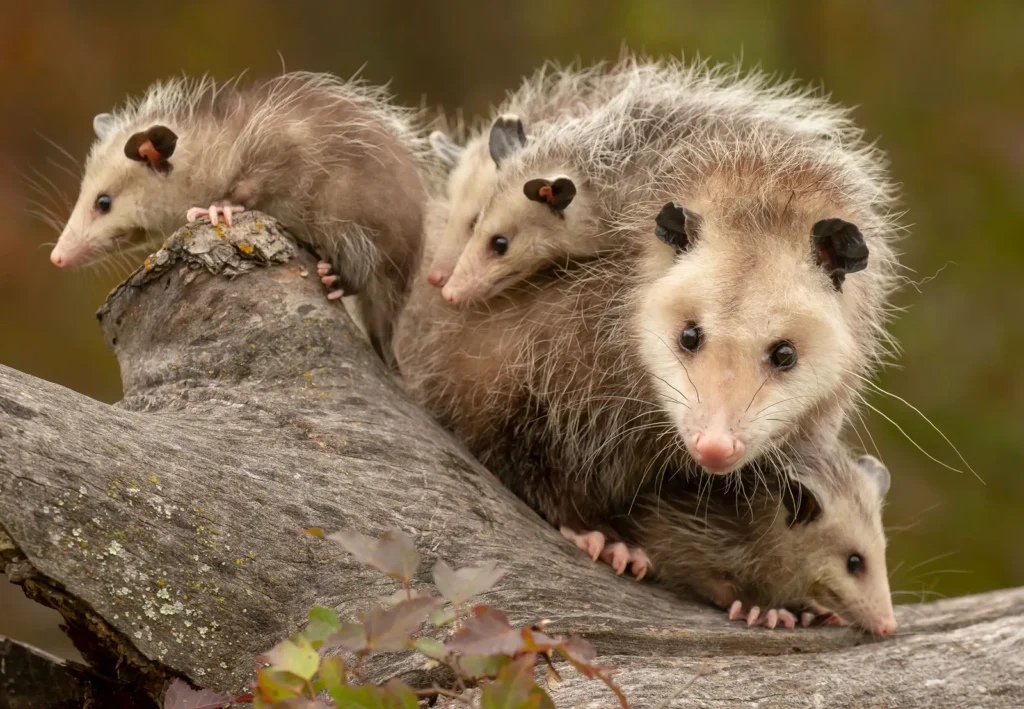Buckle up! To go into the realm of animal names that start with the letter V., we have expertly curated for you the list of 40 animal names starting with the letter V. Each animal would leave you in awe. You may come across names you have not heard before and wonder whether such animals exist.
In this article, we have covered 40 animal names starting with V, and their characteristics, including mammals, reptiles, birds, and amphibians. So, without further ado, let us begin the journey.
Teach your kids about these animals and make them aware of the interesting animals around us. In this list, we will talk about animals that start with the letter V. This will help your kid improve their knowledge and teach them about some of the rare animals existing on our planet.
Let’s get started!
1. Vulture
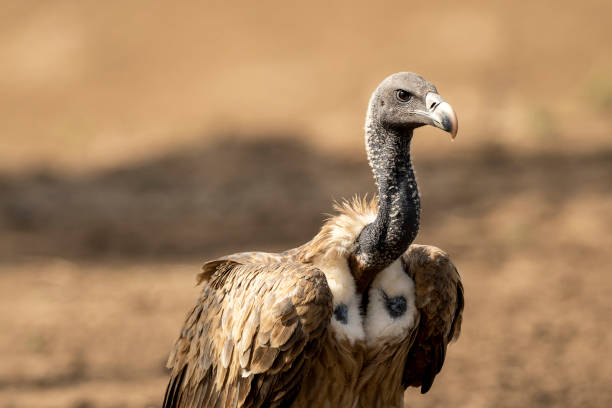
Vultures belong to the Cathartidea family. They are large and feed on dead animals, usually called carrion or carcasses. There are 23 kinds of vultures. Sixteen of them trace their natives to Europe, Africa, and Asia. The average lifespan of a vulture is 15. However, the span varies between different kinds.
They weigh around 1.2 to 1.9 kg. Many countries, including India, welcome them since they play a significant role in scavenging meat from carcasses.
Fun fact
- Unlike other predators, they do not hunt. They search for their meal (carrion) with their extraordinary eyesight from far above.
2. Vampire Bat
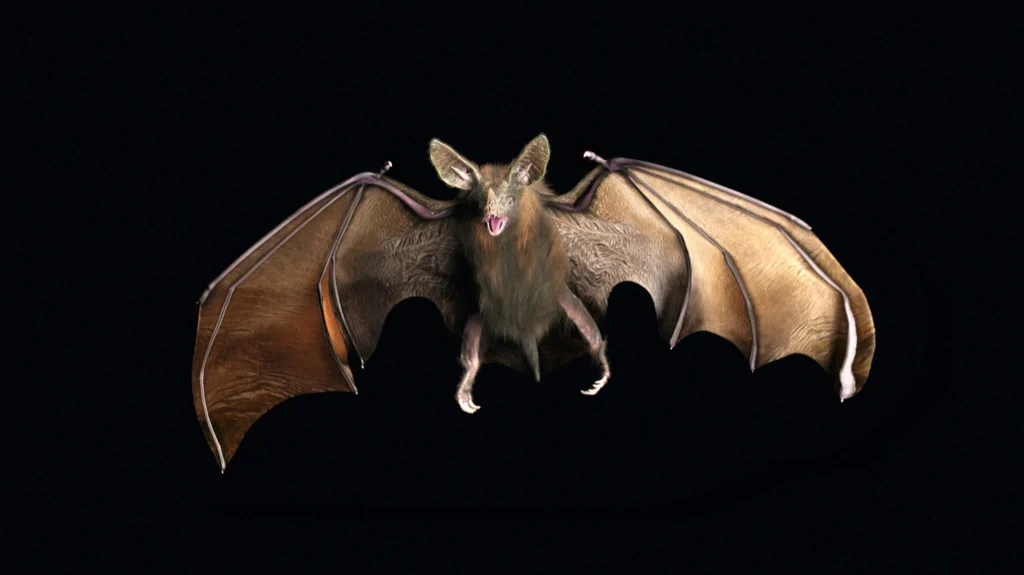
Vampire bats belong to the Desmodontinae family. They are leaf-nosed bats found mostly in Central and North America. They feed on the blood of other animals because of a dietary trait called hematophagy. They can be found in humid and airy environments and are fond of rainforests and deserts.
They dwell in caves, mines, and abandoned buildings. The average life of a vampire bat is nine years. They weigh around two ounces. The average size of a vampire bat is 3.5 inches, and the wingspan is 7 inches.
Fun facts
- They do not suck out blood. Rather, they make a pool of blood using their teeth and drink it with their leaf-shaped mouth.
- Vampire bats can run, unlike other bats, and they have incredible eyesight.
3. Vicuna
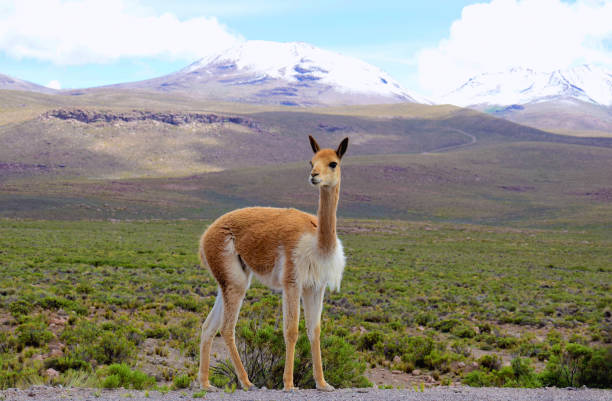
Vicuna falls under the Camelidae family (camel). The species are closely related to Ilama. Their scientific name is Vicugna. They live in high alpine areas. They weigh around 35 to 65 kg. And the height of an average Vicuna is around 65 to 75 cm. Vicuna is native to the Andean region of South America.
They feed on grass like cows. They chew on the cud, and their lower teeth grow till they die to maintain sharpness.
Fun fact
- Their wool is soft and thin. They are the most coveted by Incan royalty. They are an endangered species. Their population is around 3,50,000.
4. Vervet Monkey
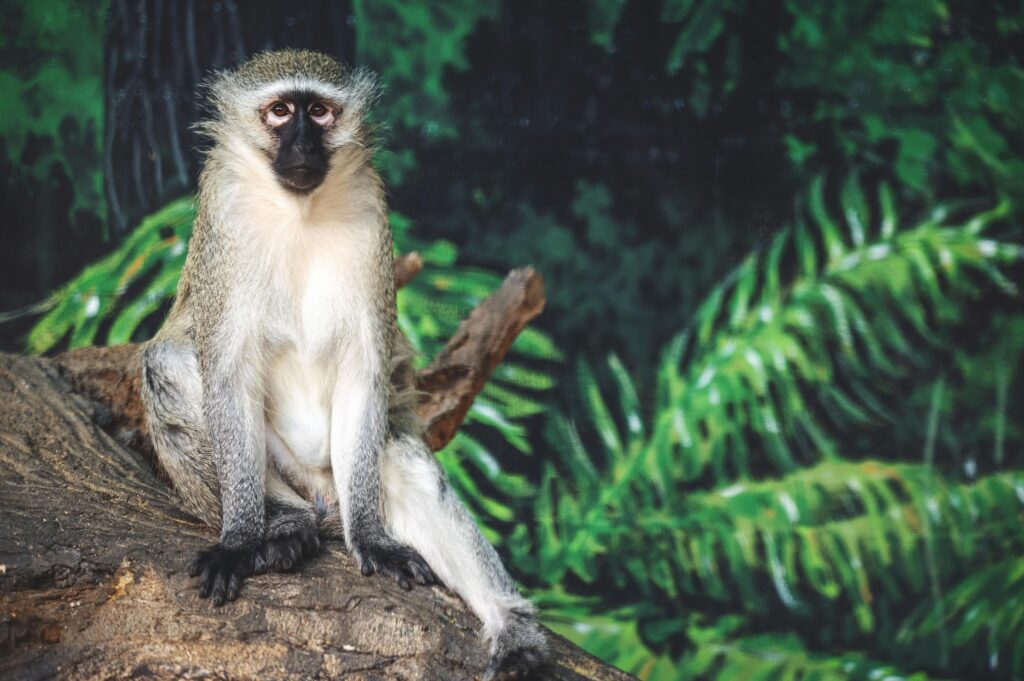
The scientific name of this species is Cercoppithecidae. They are native to Africa. Vervets are semi-terrestrial, meaning they are equally comfortable on the ground and the trees. The average lifespan of a verve monkey is 30 years. They feed on leaves, shoots, gums, and fruits.
They occasionally feed on lizards, geckos, and birds. There are six species of vervet monkeys. They typically live in groups of 30 and can easily adapt to any surroundings.
Fun facts
- They use 36 distinctive ways to communicate. They are afraid of snakes.
- They are afraid of humans, and when they come into contact with humans, they get startled and behave in an offensive way to protect themselves.
- People often mistake them for being wild.
5. Vervet Worm
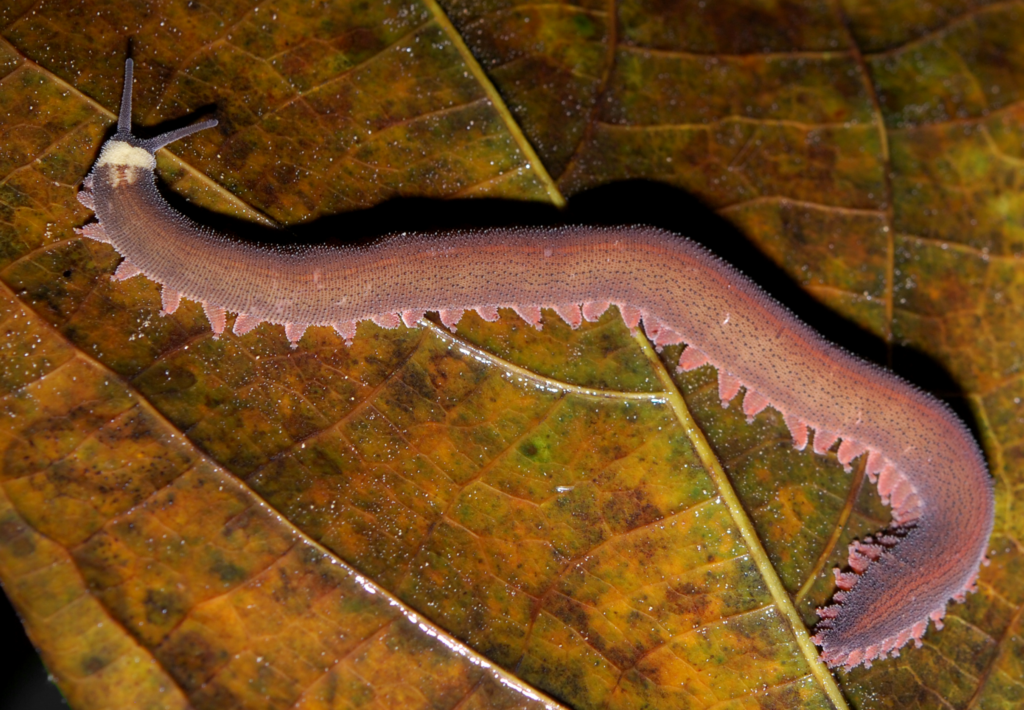
The scientific name of Vervet worms is Udeonychophora. They are soft and slimy. They feed on termites and small insects by squirting a slimy substance from their oral tube. Though they seem soft and harmless, they are active carnivores but pose no threat to humans and pets.
They dwell in places with high air and humidity. Mostly beneath leaves, bark, and rotten wood.
Fun fact
- They squirt an adhesive substance in a fraction of a second to catch their prey.
6. Viper
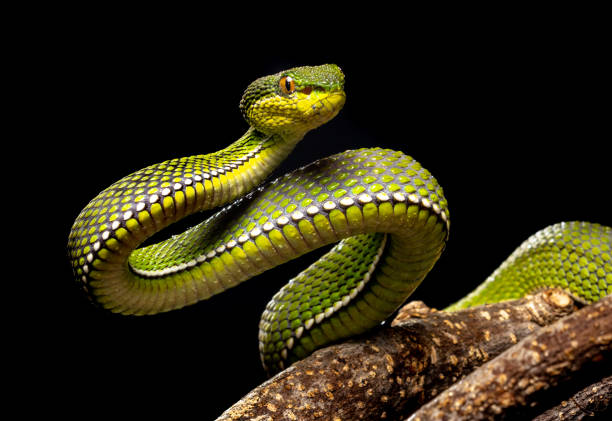
The viper or Viperidae is one of the deadliest and most venomous of the animal kingdom. They can be seen in almost all parts of the world. And cannot be seen in Antarctica, Australia, Hawaii, Madagascar, and New Zealand.
Their venom can cause tissue damage, swelling, and some serious internal organ damage. There are 200 different kinds of vipers in the world. They feed on centipedes, insects, reptiles, and mammals.
Fun fact
- They do not lay eggs but give birth to young ones. Their 2-inch fangs fold up to their mouth and come out in a fraction of a second.
7. Vaquita (Porpoise)
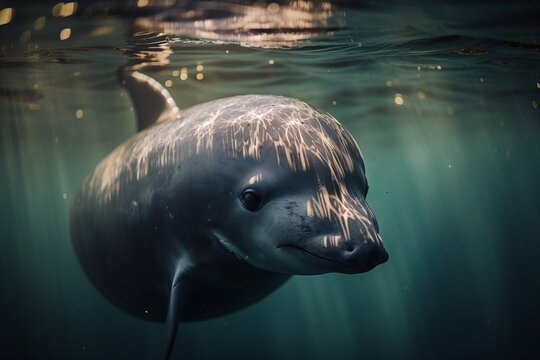
Vaquita or Porpoise falls under the Cetaceans family of mammals. They can be seen in the Gulf of California and Mexico. Vaquitas are carnivorous and feed on small fish, squids, and octopuses. They are five feet, weigh around 16 pounds, and are considered the smallest of the Cetaceans family.
The average lifespan of a vaquita is 21 years. They are critically endangered. There are only 10 vaquitas left in the world.
Fun fact
- They attain sexual maturity at the age of 3.
8. Vanga
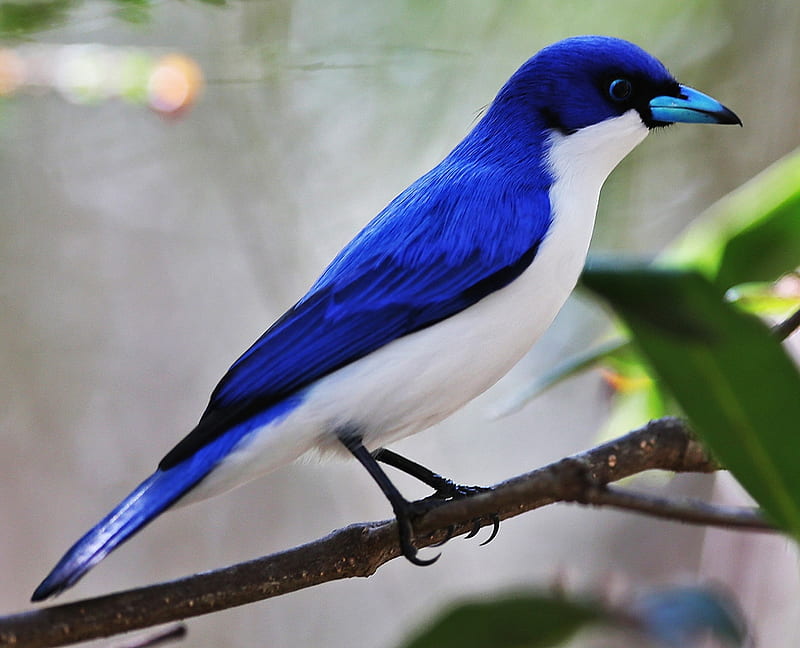
The Vanga is a bird that can be seen from Africa to Asia. The reason they are on the list is that though they are birds, they fall under the animal kingdom. Their scientific name is Vangidae. They feed on millipedes, centipedes, reptiles, and amphibians. They are small-sized birds, around 12 to 15 cm.
Fun fact
- Many vangas have hooked bills on their heads.
9. Velvet Ants
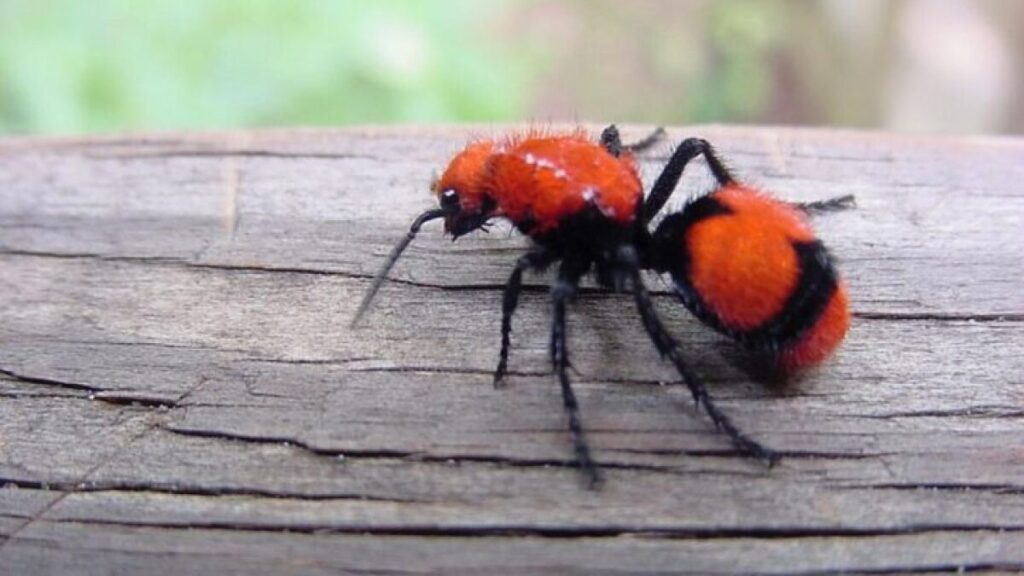
Velvet ants belong to the Mutillidae family. They are one of the 7000 species in the family of other wasps and insects. They got their name because of their dense pile of hair, which is often scarlet or orange.
Adult velvet ants, like other members of the family, feed on the nectar of flowers. Young ants feed on the cocoons and pupae of their hosts.
Unlike other ants, they do not live in groups. They live alone. They can be seen outside on warm days. They live for up to one year. They prefer to live in pastures and sandy places.
Fun fact
- Velvet ants can be ferocious and can deliver multiple bites like wasps when disturbed.
10. Viscacha
The viscachas, or burrowing rodents, are found in the northern parts of Peru, Western and central Bolivia, Central Chile, and Western Argentina. These little furry creatures are scientifically called lagidium. They weigh around 3kg. Their body height measures up to 12 to 18 inches.
They are droopy, have dark grey or brown on their above, white and light brown, and yellow on their underparts.
Fun facts
- Their gestation period is just 13 days.
- The young ones are born with fur on and their eyes open.
- They start to have solid food after hours of being born.
11. Vinegaroon (Uropygi)
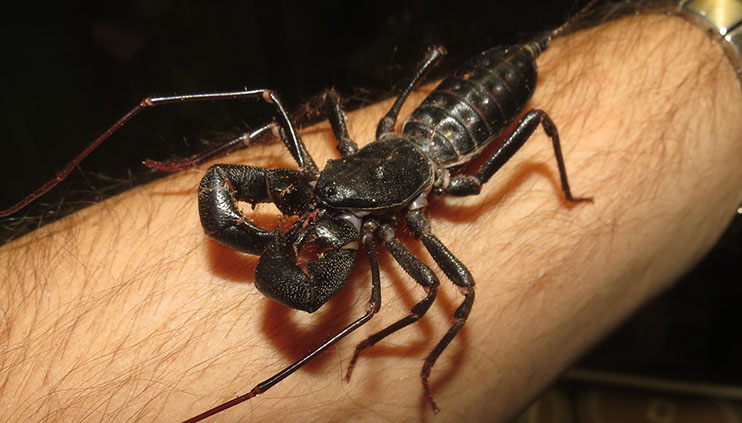
Vinegaroon or Uropygi, or whip scorpion, can be found in Arizona, Texas, Florida, Central, and northern Mexico. It belongs to the Scorpion family. They feed on millipedes, centipedes, amphibians, and cockroaches. They are harmless to humans. Some people pet them because of that.
They can grow up to 3 inches long. They carry their eggs on their stomachs, and once they are hatched, they carry them on their backs.
Fun fact
- They squirt acetic acid, which is a vinegar-like substance, from their backs when threatened or wanting to save themselves.
12. The Vervain Hummingbird
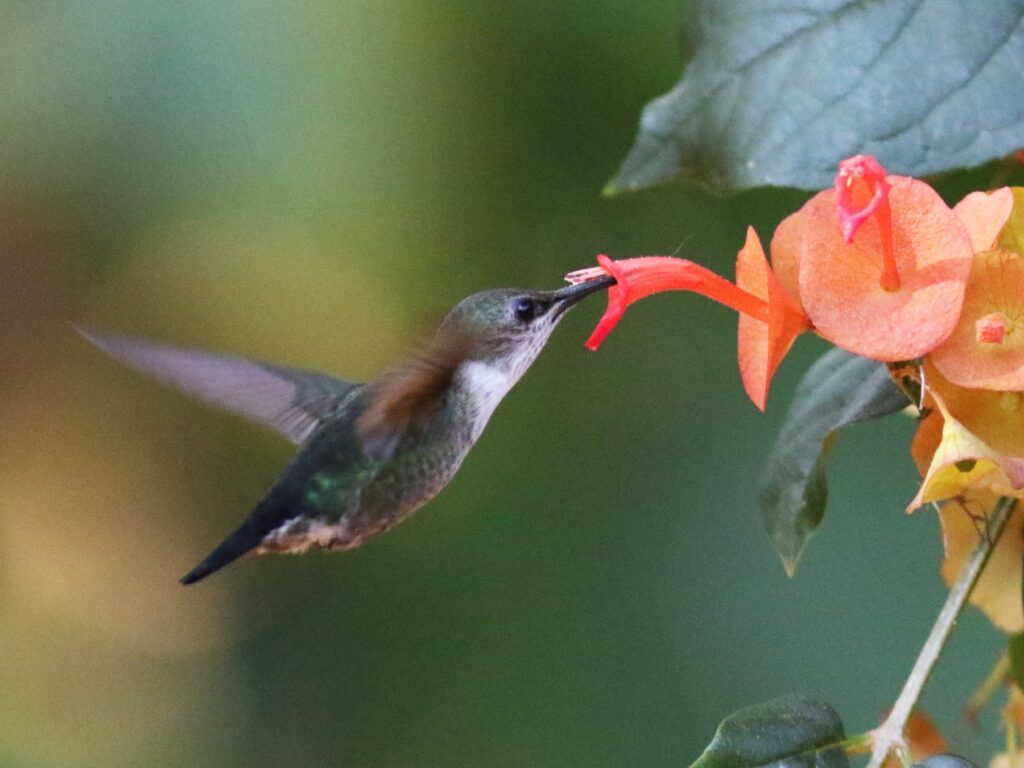
The vervain hummingbird or mellisuga minima can be seen in Arizona, Texas, California, and Mexico. They are fond of places with flowers and woods. They are natives of Hispaniola and Jamaica. Telling them apart can be hard. The sexes of them are identified by small plumage on their tails.
They weigh 2 grams and have a length of 6 cm. The vervain hummingbird is the smallest bird in Jamaica.
Fun fact
- The vervain hummingbirds are the second smallest bird in the world.
13. Viperfish
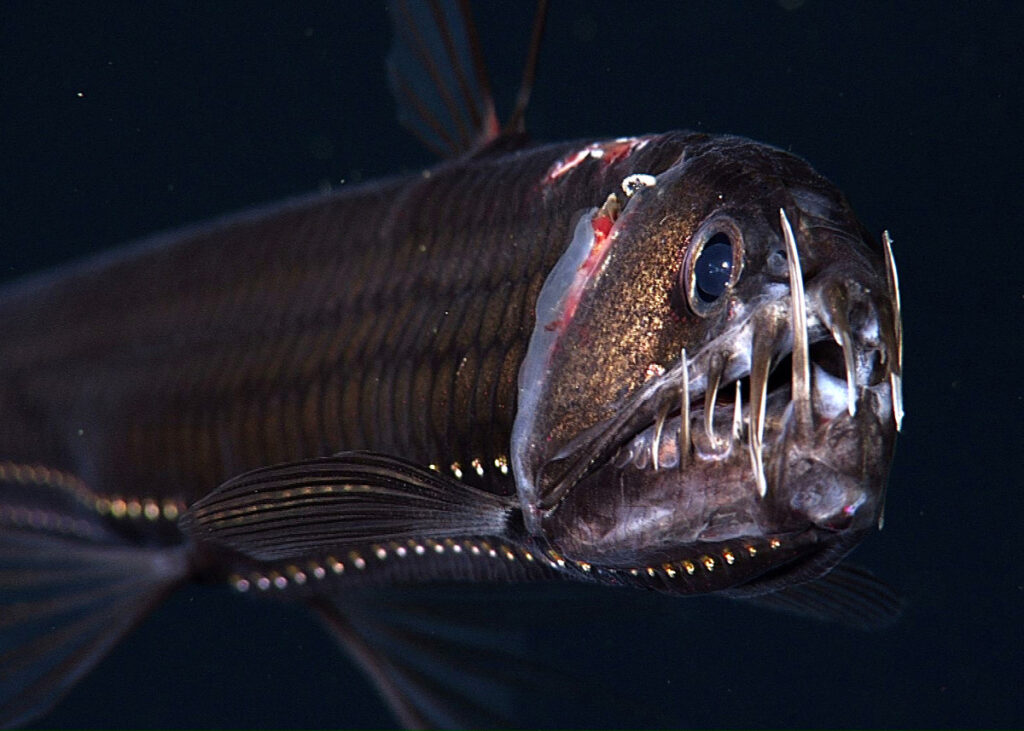
The scientific name of the viperfish is Chauliodus. They can be found throughout the world in temperate waters at a depth of 2800 meters. Since they live deep in the water, they rarely come into contact with humans. Although they pose no threat to humans, their gore appearance and sharp needle-like teeth frighten people.
They can so rarely be found that only a few specimens are there to understand them. They feed on algae, fish eggs, and mostly lanternfish.
Fun fact
- They can go on without eating for days after having a meal.
14. Vesper Bat
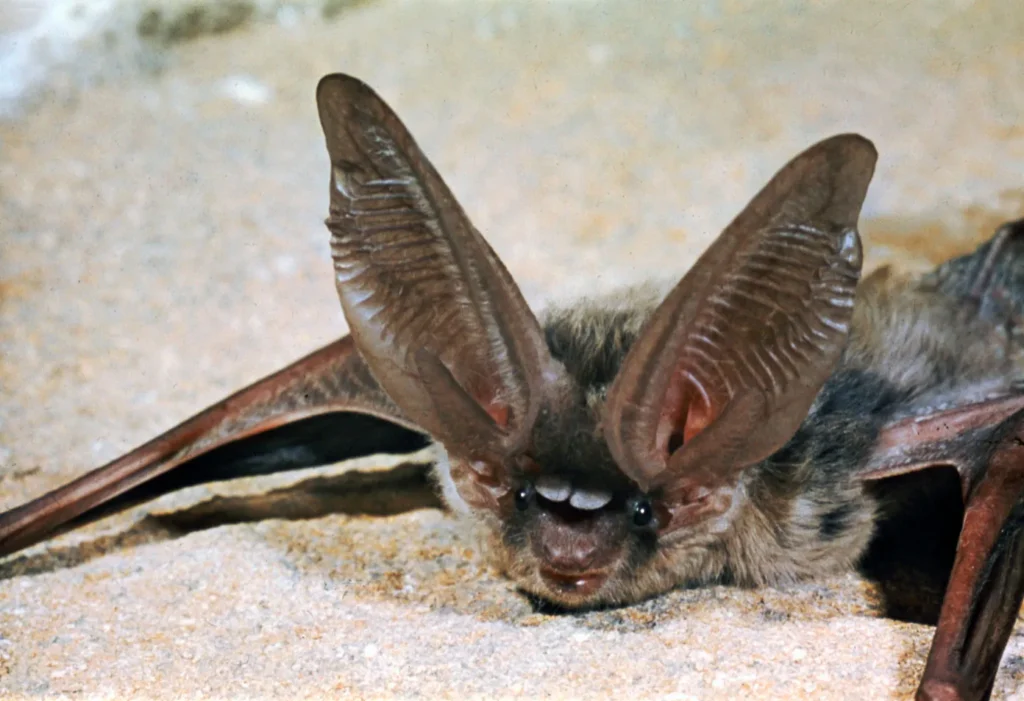
Vesper bats, or scientifically, the Vespertilionidae, can be found in tropical forests and deserts. They are the most commonly known species of bat. They are like other bats, nocturnal, and use echolocation to navigate.
They range up to 10 cm and weigh up to 50 gm. They feed on beetles, cockroaches, reptiles, and other small insects.
Fun fact
- They got their name from Latin – Vesper, meaning Evening (because of their nocturnal quality).
15. Velvet Gecko
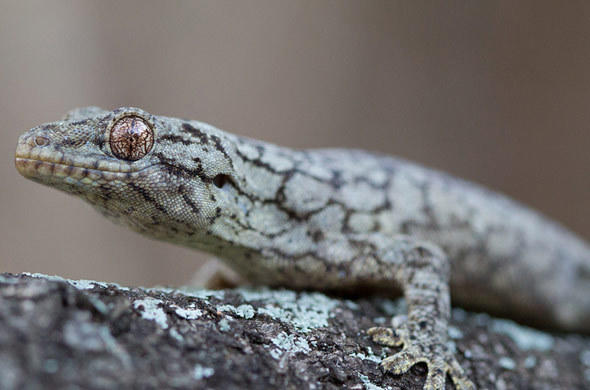
The velvet gecko or Trton’s velvet gecko falls under the family Diplodactylidae. The species can be found in Australia. They are insectivores and feed on various insects like millipedes, centipedes, roaches, and larvae.
They can be raised as pets. A young one should be fed every day, and an adult should be fed every two days. Their approximate length is 16 cm.
Fun fact
- They are rich brown on top and pale brown on their limbs.
16. Vine Snake
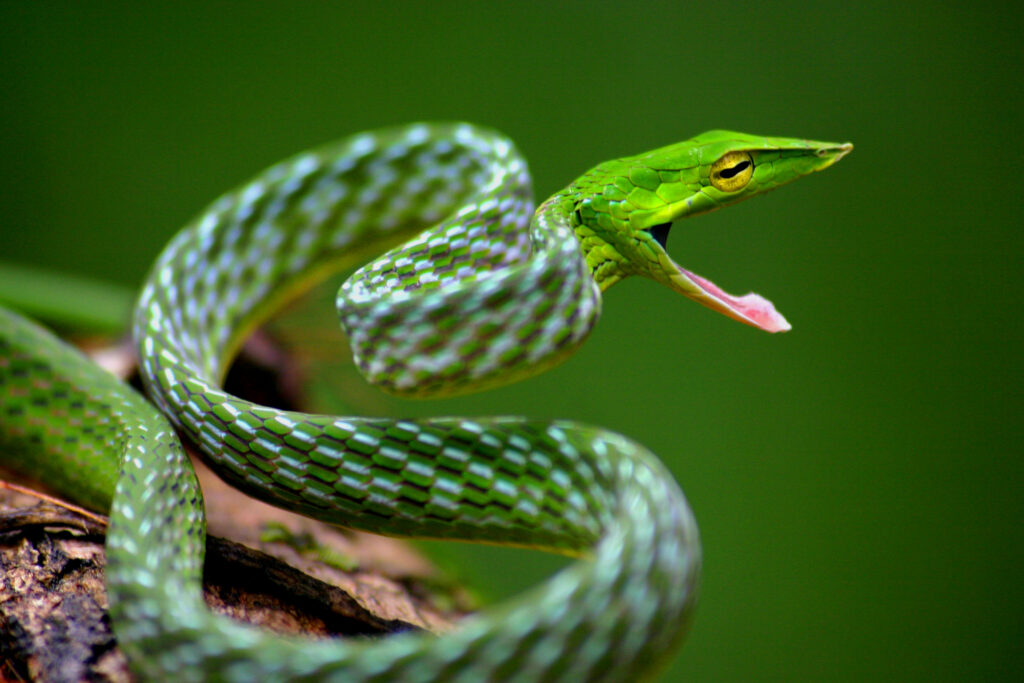
Vine snakes, scientifically Ahaetulla nasuta, are natives of Sri Lanka. They are venomous but have caused relatively small threats to humans. They have their fangs folded up under their eyes. They are long-nosed and look like a whip.
They feed on frogs and lizards. They are known for their green-scale bodies and the width of a pencil. The size of vine snakes ranges between 0.75 and 1.5 meters.
Fun fact
- They got their name because they resemble a plant.
17. Vulture Bees
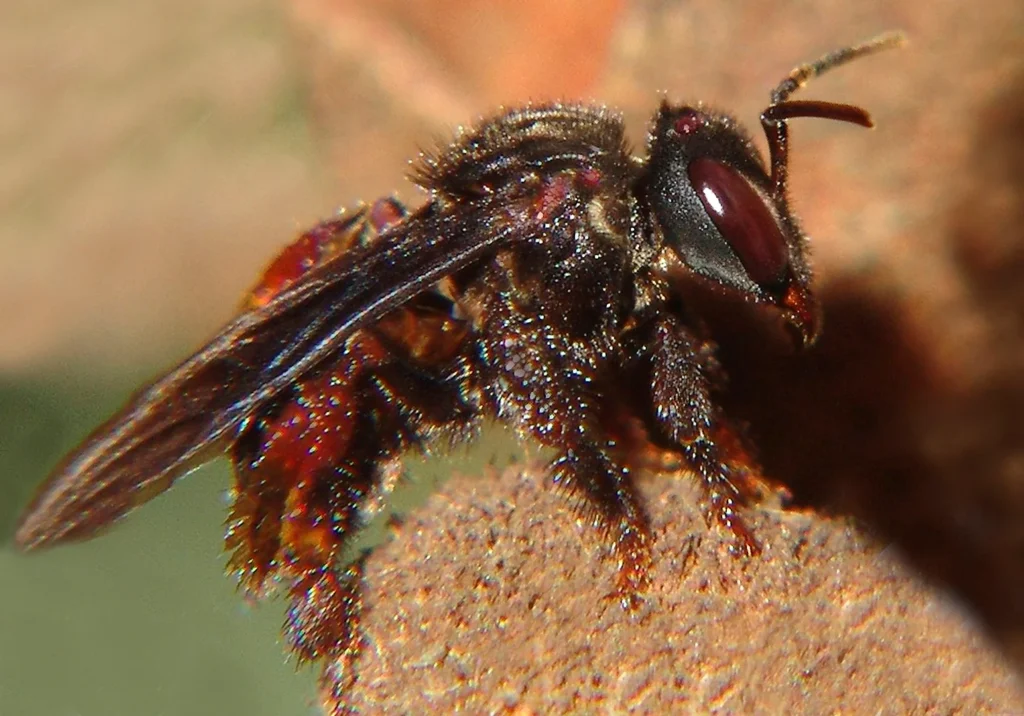
Vulture bees are also called carrion bees because they feed on carrion, like vultures, thus the name. They belong to the Trigona family. They are natives of Central and Southern America from Panema, the Amazon basin, to Guiana.
Although they feed on carrion, they produce honey. Scientists claim that they store meat in a different compartment. And their honey is edible and sweet.
Fun fact
- They are known for their strong mandibles. With them, they enter a carcass through the eye and feed on the rotten meat.
18. Varied Thrush
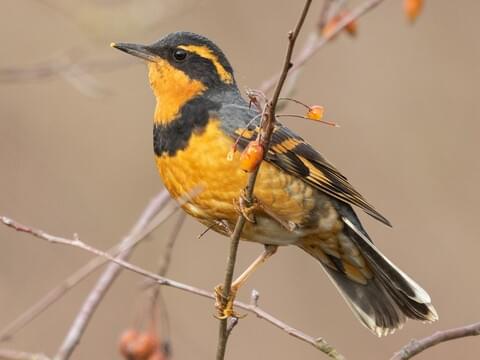
The varied thrush, scientifically Ixoreus naevius, can be found in the humid forests along the Pacific Coast. They feed on cherries, mistletoe, berries, and fallen fruits.
They weigh around 60 to 100 mg. And range around 20 to 26 cm. They are quite similar to the American Robin and vary in a few distinctive details, such as a brown breastband and an orange eyebrow.
Fun fact
- Varied thrushes are often aggressive with other birds and always try to dominate them.
19. Volcano Rabbit
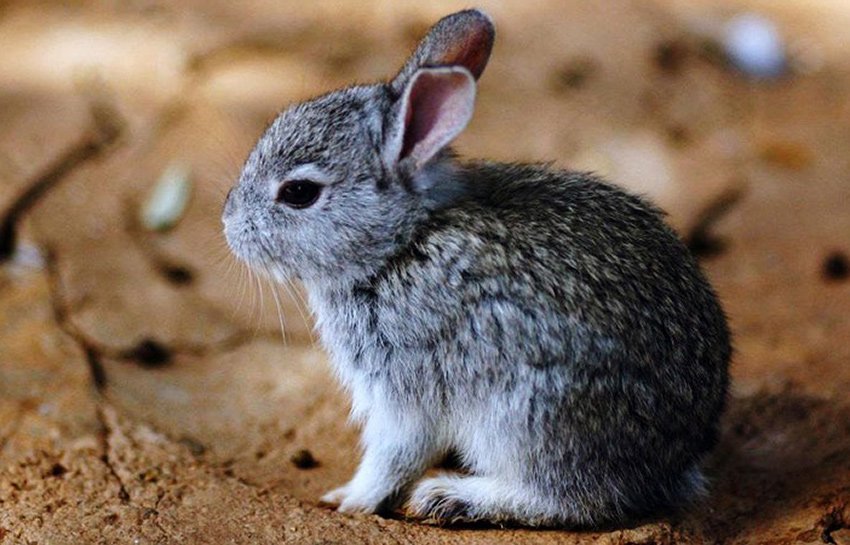
The volcano rabbit is the world’s second-smallest rabbit. Where the pygmy rabbit holds first place, they are mostly black and brown. They have small ears and thick fur. Volcano rabbits range from around 9 to 12 inches. And weigh around 375 and 600 gm.
Their primary diet includes Festuca amplissima, Stipa ichu, and Eryngium resei. They feed on them as well as use them to hide from predators.
Fun fact
- Volcano rabbits can only be found on the slopes of four mountains in Mexico.
20. Virginia Opossum
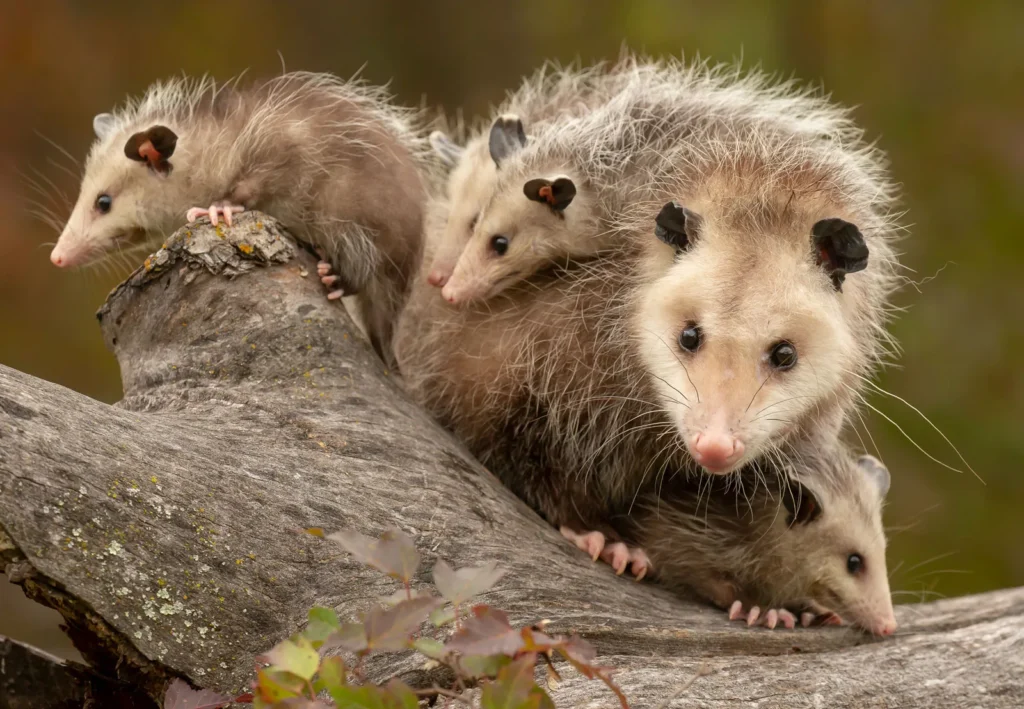
Virginia opossum can also be called the North American Opossum. They are scientifically called Didelphis virginiana. They can be widely seen from South to North America. They are the northernmost marsupials in the world.
They live up to four years in captivity. They are nocturnal and feed on plants, fruits, berries, frogs, insects, and small animals. They are omnivores and sometimes feed on carrion.
Fun fact
- They hold the first spot for having the lowest gestational period of 13 days.
21. Variable Harlequin Frog
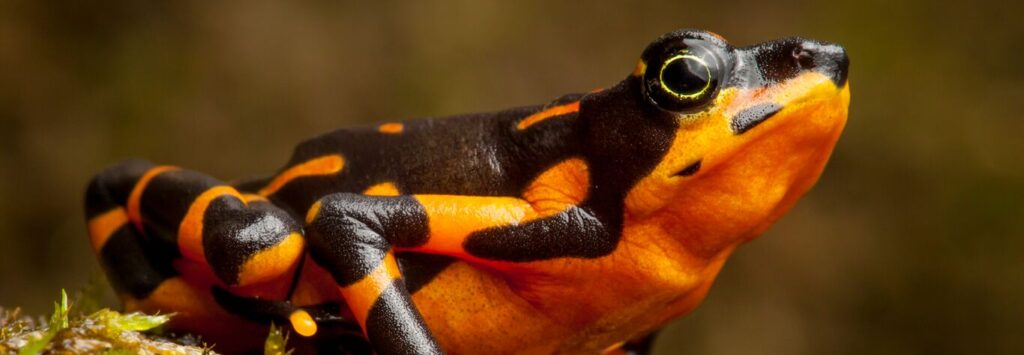
Variable harlequin frog or Atelopus various is a neotropical frog that belongs to the Bofonidae family. They can be found in rainforests and cloud forests. They feed on small insects, spiders, caterpillars, and ants. Variable harlequin frogs have multiple color palettes, like orange, green, blue, gold, purple, purple, and brown. They grow up to 1.5 inches.
Fun facts
- While mating, they involve the amplexus (a frog-breeding hug), which lasts for weeks.
- The male frog loses up to 30% of its body mass in this process.
22. Varanus Komodoensis
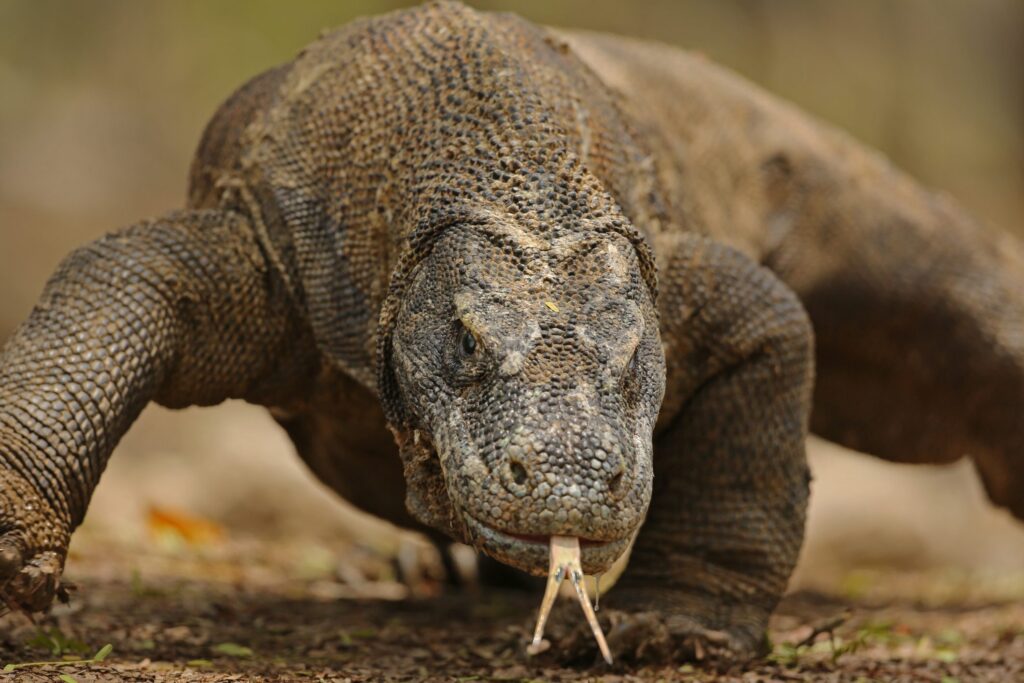
Varanis komodoensis or Komodo dragon or komodo monitor is endemis to the Indonesian islands. They belong to the Varanidae family. They are the largest in the lizard family. They grow up to 3 meters and weigh around 79 – 91, and female ones weigh around 68 to 73.
Being the dominant species on their islands, they feed on everything from carrion to deer, pigs, small dragons, and water buffaloes.
Fun fact
- They are not dragons. They can reproduce sexually and through parthenogenesis.
23. Verreaux’s Sifaka
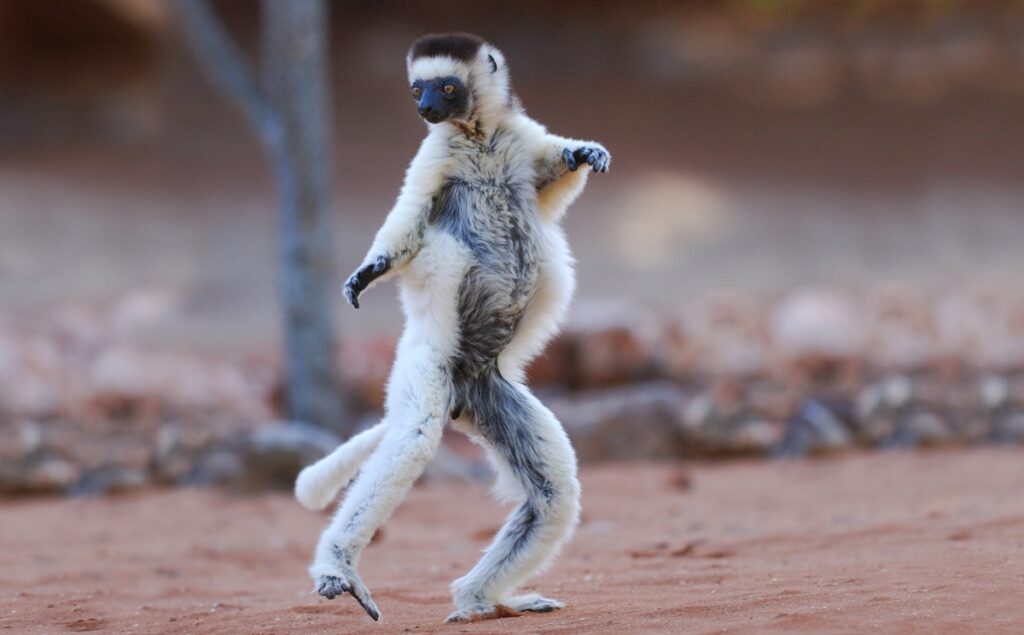
Verreaux’s Sifaka belongs to the Lemur family. They are also called white Sifakas and, scientifically, Propithecus verreauxi. They weigh up to 3.6 kg. And grow up to 47 cm. They are herbivores and feed on plants, fruits, berries, and leaves. They are critically endangered. Their gestation period is 150 days.
Fun facts
- They are called dancing lemurs.
- Their tail are the same as their body.
24. Vizcacha Rat
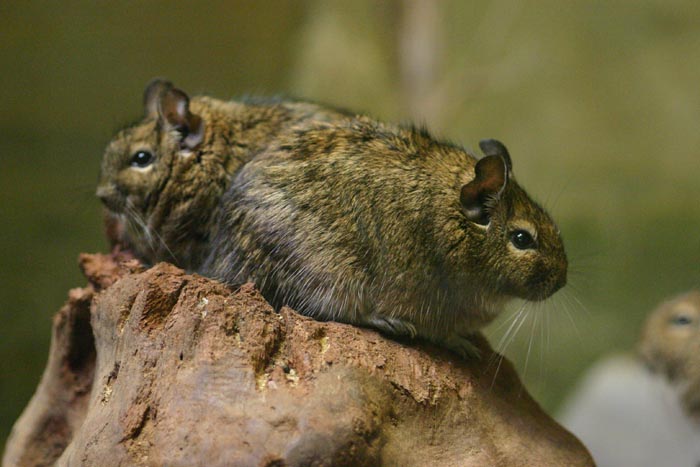
Vizcacha rats belong to the Octodontidae family. They are endemic to Argentina. They are scientifically called Tympanoctomys barrerae. A long tail, a large head, and short ears identify them. They are medium-sized.
An adult Vizcacha rat measures around 13 cm. And 15 cm. Without a tail. On average, they weigh around 90 gm. They mostly feed on the leaves and seeds of shrubland vegetation. During summer, they feed on Prosopis trees.
Fun fact
- They are solitary and nocturnal.
25. Vietnamese Pot-Bellied Pig
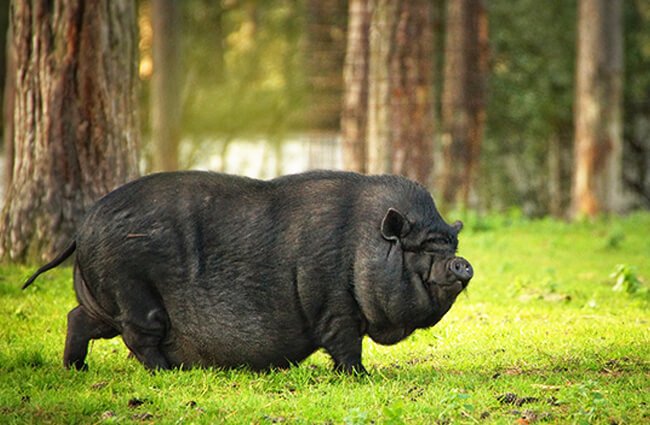
Vietnamese pot-bellied pigs are endemic to Vietnam. They are domesticated and raised for their delicious flesh. They are black and small domestic pigs. They range from around 36 cm. And weigh around 48 to 50 kg.
They feed on roots, veggies, nuts, and small insects. They have short legs and loose skin that resist fleas and parasites. Their average life span is 10 to 20 years, but in special cases, they can live up to 30 years.
Fun fact
- They attain sexual maturity in 5 to 7 months.
26. Varanus
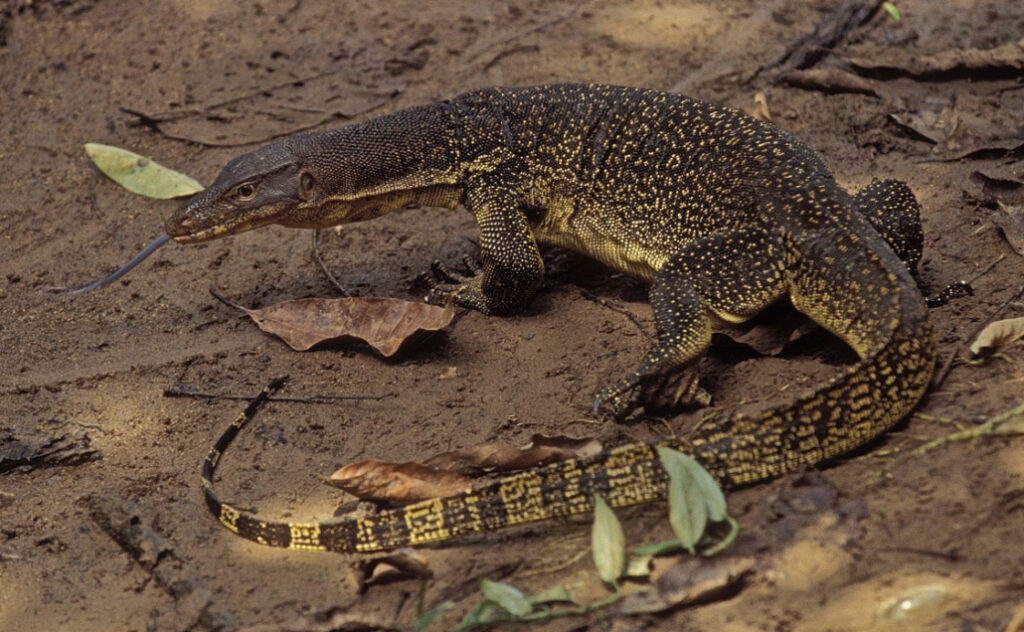
Varanus or monitor lizards are endemic to Africa, Asia, Oceania, and the Americas. There are around 80 different species of monitor lizard. The average height of monitor lizards is 1.5 m. In some cases, they grow up to 3 meters.
They feed on other reptiles, tortoises, and carrion. Monitor lizards are active at night. They are semiaquatic and carnivores.
Fun fact
- Monitor lizards have forked tongues, which make them stand out from other reptiles other than snakes.
27. Vole
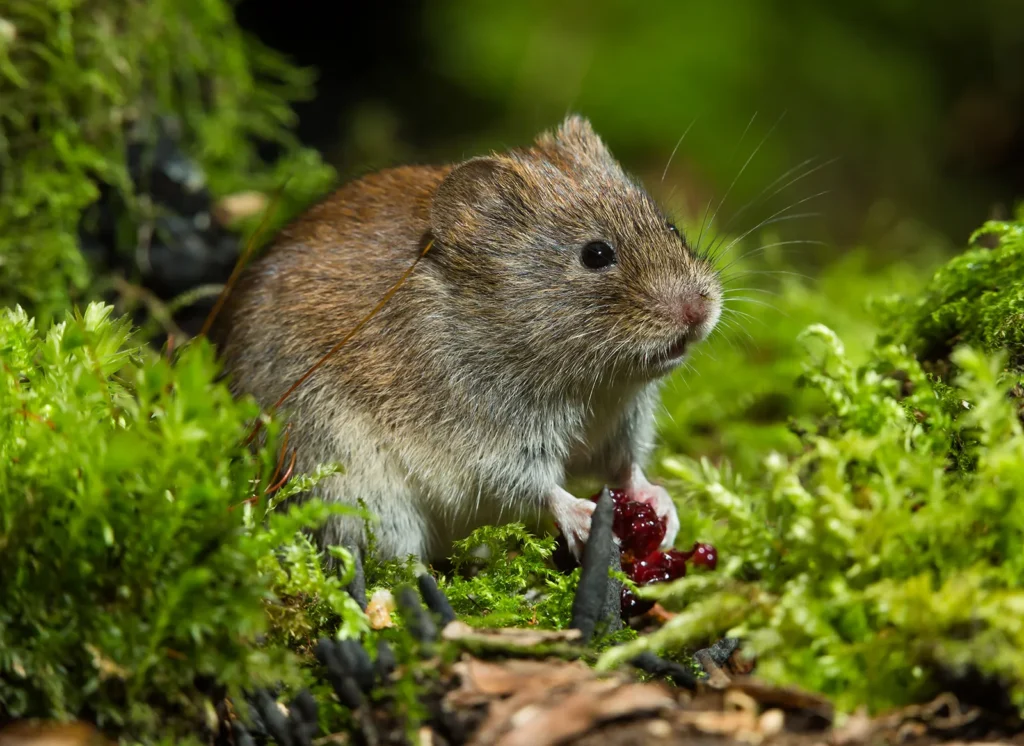
Voles are similar to hamsters and lemmings. They belong to the Cricetidae family. They have small ears and eyes, a hairy tail, and a round head. They can be found in North America. They are widely known as field mice.
They grow up to 6 inches in length and weigh around 25 to 27 grams. They mostly feed on roots, herbs, bark, and tubers. The maximum lifespan of voles is one year. They gestate for 21 days.
Fun fact
- There are nearly 70 types of vole.
28. Velvet Sea Snail
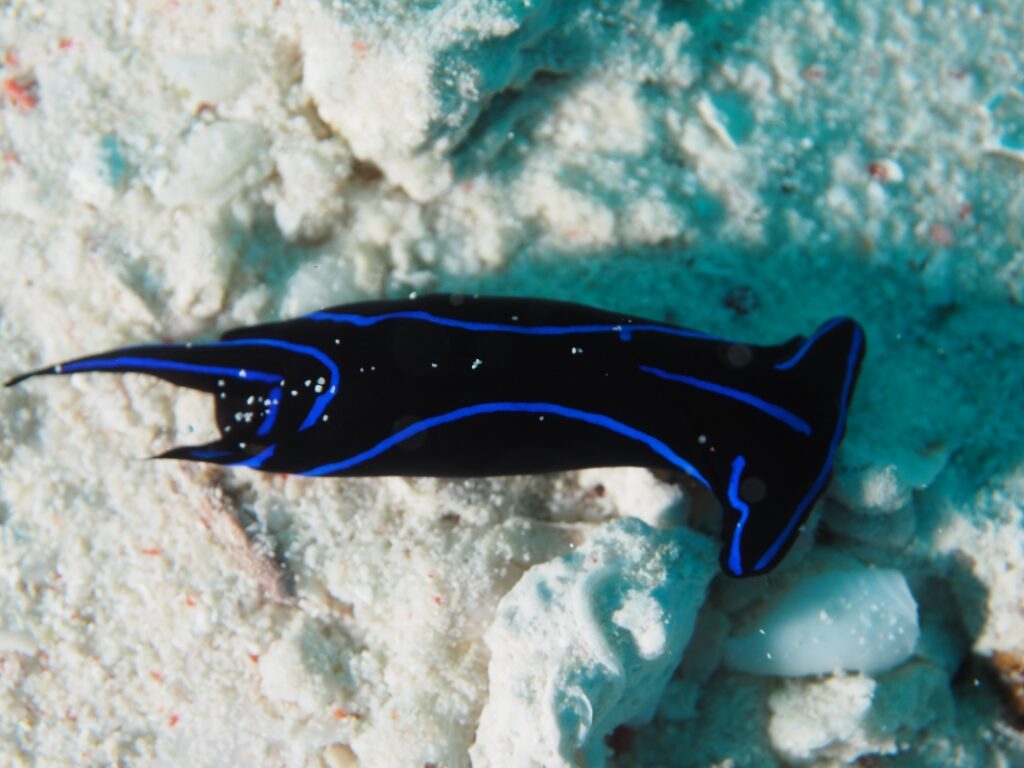
Velvet sea snails are scientifically called Coriocella hibyae. They are widely known as Head Shield sea slugs. They feed on Physalia physalis and Velella velella in the sea. They secrete a poisonous substance when they die. They reach a maximum height of 10 cm. Their lifespan is 3 months.
Fun fact
- They float using a bubble raft made of their mucus.
29. Venezuelan Poodle Moth
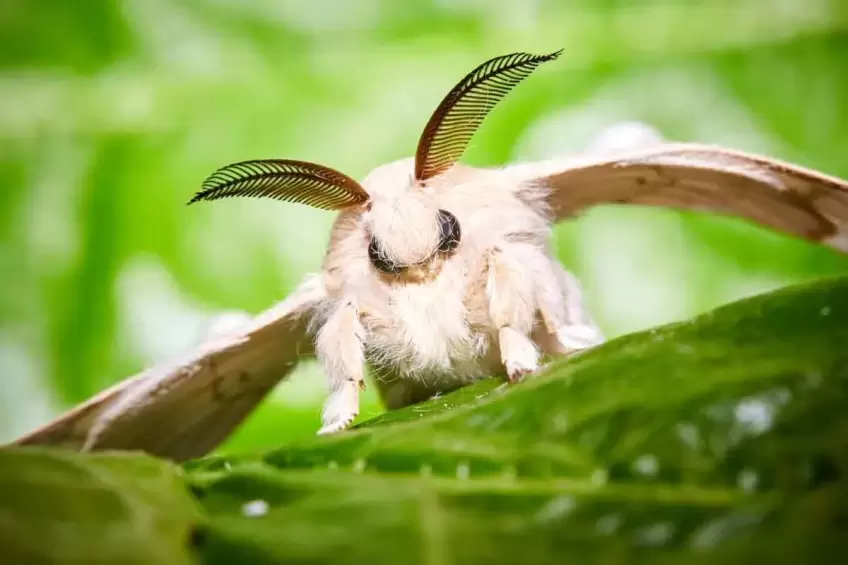
The Venezuelan Poodle Moth is a yet-unidentified species. It was shot by a zoologist named Kyrgyzstani. It got its name because it resembled a Poodle. It is believed that it belongs to the family of muslin moths. The moth is soft and feeds on herbaceous plants.
Fun fact
- Only one person has seen the species and taken a picture. It was not sampled.
30. Velvet Belly Lantern Shark
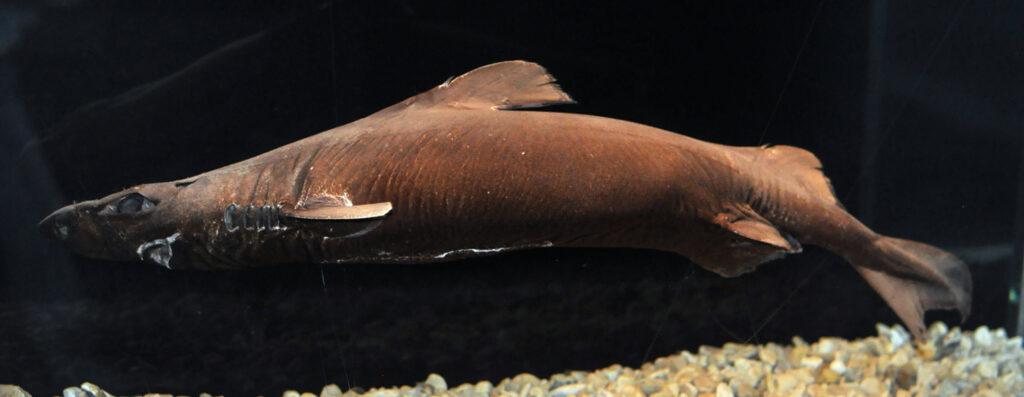
The velvet belly lantern shark is underwater. They are food for underwater predators like sharks. They are scientifically called Etmopterus spinax. They belong to the Etmopteridae family. They can be seen in the Northeast Atlantic Ocean.
The average size of a shark is 45 cm. In some cases, they can grow up to 60 cm. And weighs around 470 grams.
Fun fact
- Female sharks are larger than male ones.
31. Velvet Tamarin Monkey

The velvet tamarind monkey is a squirrel-shaped monkey native to the Southeastern Atlantic coast of Brazil. They belong to the Callitrichidae family. They live for up to 12 years. They are aggressive, and it is not advised to get into contact with them in the wild. Because of their small size, they are not considered a threat to humans. They range from 13 to 30 cm. And weigh 348 to 575 grams.
Fun Fact
- There are only around 200 of them left in the world.
32. Vespa Mandarinia
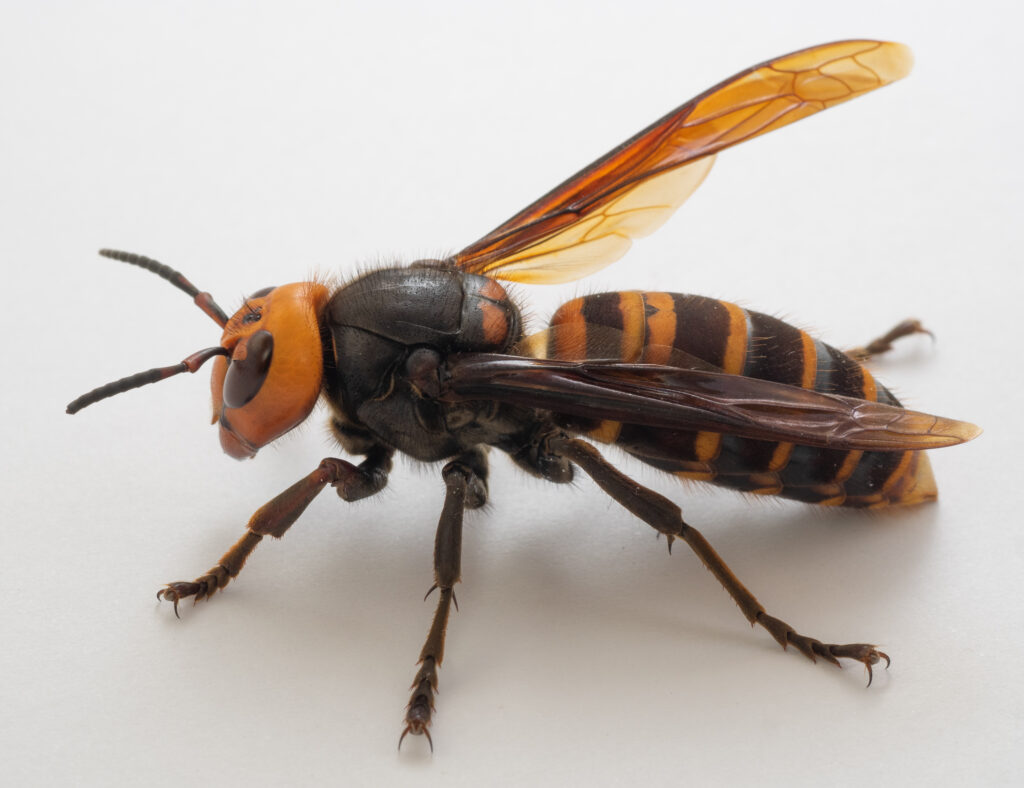
The Vespa Mandarinia, or the Asian giant hornet, or the northern giant hornet, is considered the world’s largest hornet. It is native to East Asia, South Asia, and Southeast Asia. They belong to the Vespidae family. They are insectivorous omnivores. They feed on insects, fruits, and honey. They have a body length of 45mm.
Fun fact
- Their sting has potent venom. Their sting measures 3mm.
33. Velvet Bean Spider
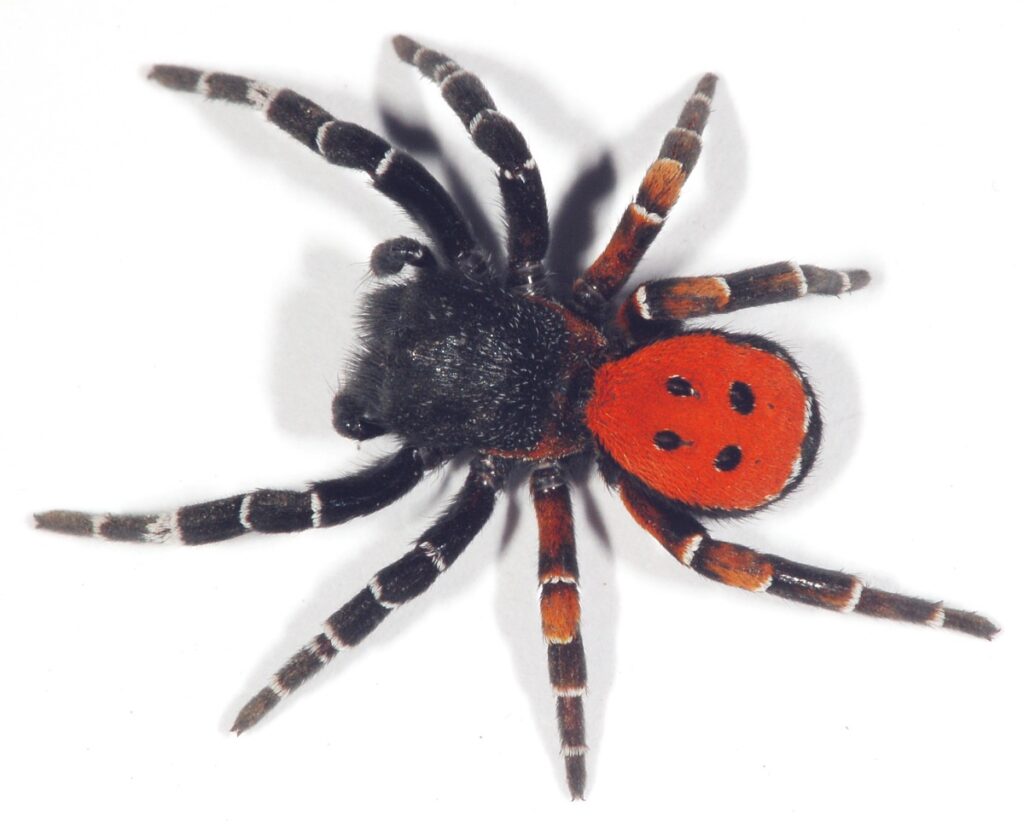
As the name implies, the velvet bean spider is velvety. It can be seen only in Brazil. There are around 130 similar species. They spin minuscule, wispy webs while sucking liquids from the vegetation. They may cause problems for plants. They are safe for humans, just like real velvet mites. True velvet mites are smaller than spider mites. They frequently leave a crimson stain when you press against them.
Fun Fact
- The mother spider feeds on her internal organs for the young ones. Once the young ones sense that, they start to eat the mother spider.
34. Velvet Spotted Crab
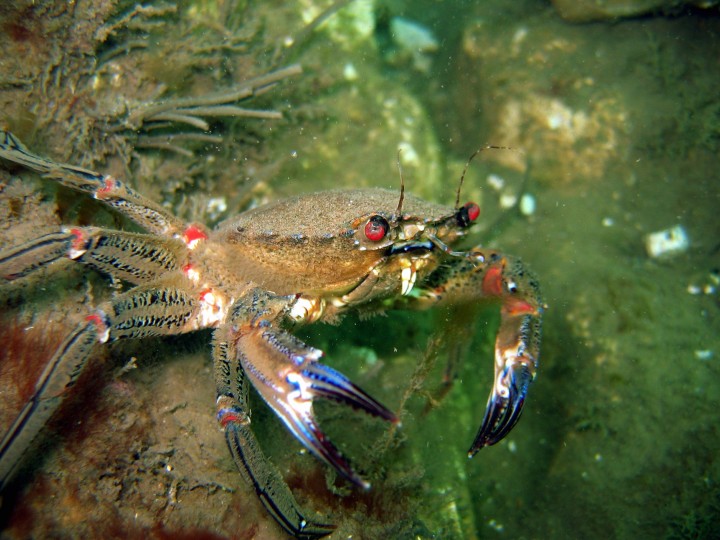
The velvet spotted crab is native to Southern Norway to Western Sahara, the North Sea, the North Atlantic, and the Mediterranean Sea. They live 214 feet underwater. They are the largest in the swimming crab family. They munch on small fish, snails, and crabs.
Fun fact
- They are also called Devil crabs because of their ability to attach ferociously.
35. Vampire Squid
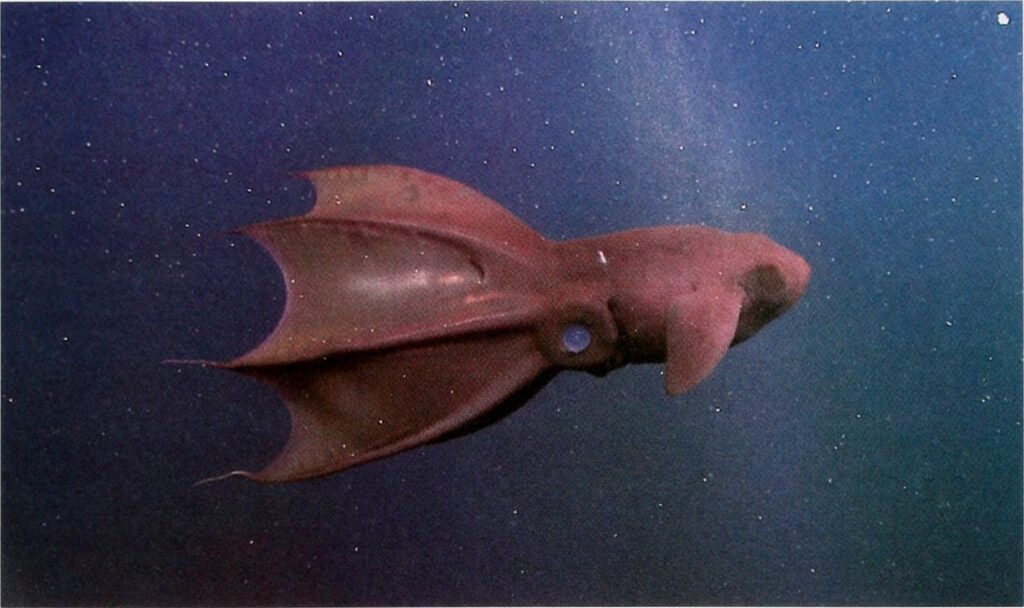
The vampire squid is scientifically called Vampyroteuthis infernalis. They belong to the Vampyroteuthidae family. They live deep underwater where the lights are off. They are completely harmless and pose no threat to humans.
They feed only on dead materials and the excretion of other animals. They can travel at a maximum of 3 km per hour. They live 600-1000 meters under the sea.
Fun fact
- Contrary to their name, they do not suck blood.
36. Vanuatu Megapode
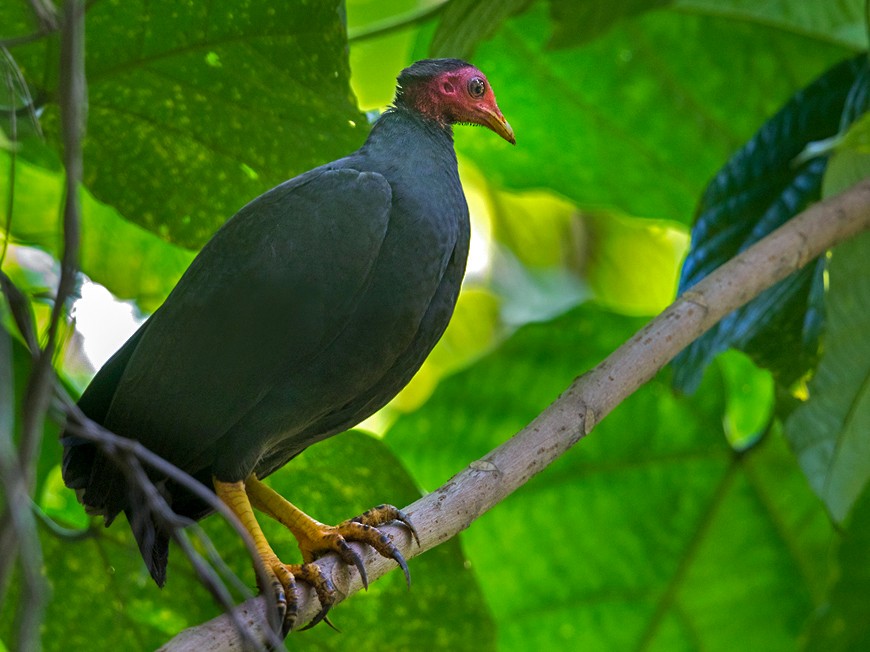
Vanuatu megapode or Vanuatu scrubfowl can be found only in Vanuatu. They belong to the Megapodidae. They dwell on the ground. They have a small head, a big body, and long legs. They feed on flies, moths, insects, fleas, and small reptiles.
They qualify as endangered because of their endemic to one particular space. They range around 200 cm.
Fun facts
- They give birth to fully grown ones.
- With feathers fully grown, they can fly on the same day of birth.
37. Vaux’s Swift
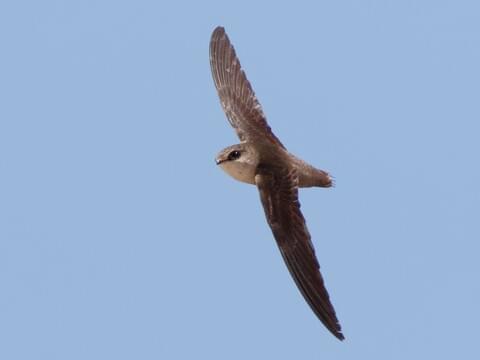
Vaux’s Swift is scientifically called Chaetura vauxi. They are native to North, Central, and Northern South America. They fly fast and catch their prey in a swift movement, thus the name. They feed on tiny insects and spiders.
Fun fact
- They move at around 35 and 80 mph.
38. Vulturine Parrot
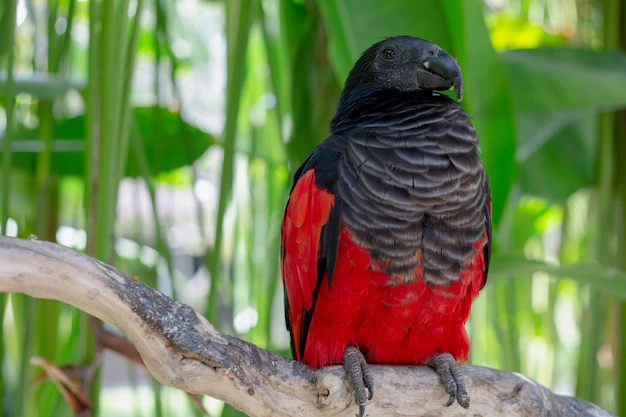
The Vulturine parrot, scientifically Pyrilla Vulturina, is native to Brazil. They belong to the subfamily Arinae and the family Psittacidae. They are medium-sized and have an appealing pattern on their heads. They are endangered due to deforestation in the Amazon. They grow up to 46 cm. And weigh around 680 to 800 grams.
Fun fact
- There are only 20 to 50 thousand birds left.
39. Vulturine Guineafowl
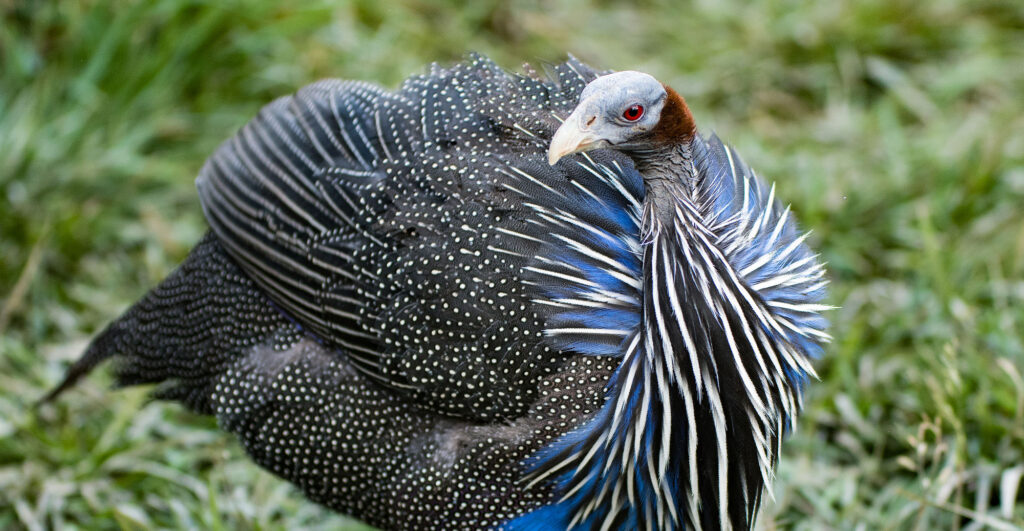
The Vulturine Guineafowl is scientifically called Acryllium Vulturium. They are native to the forests of Central Africa. They are unusually long-necked and have blue and black stripes on their breasts. They can dwell in forests, deserts, and grasslands.
They measure 61 to 71 cm. They feed on shrubs, fruits, plants, and insects. They rarely feed on plants and mostly have insects. Similar species can be found in Kenya, Ethiopia, Tanzania, and Somalia.
Fun fact
- They got their name because of their bald head resembling a vulture.
40. Visayan Warty Pig
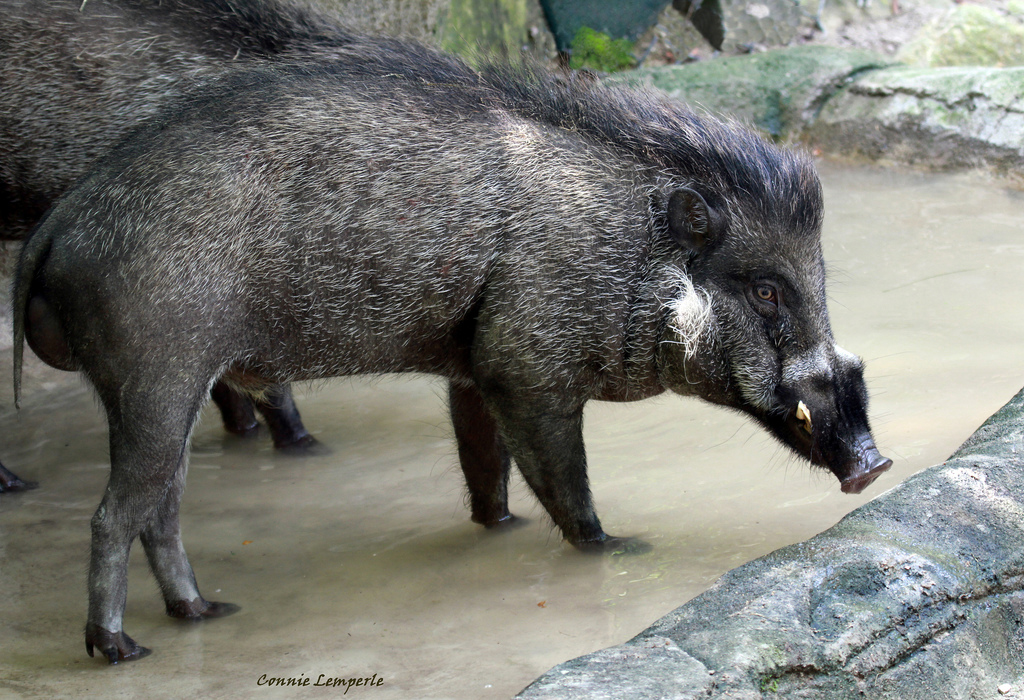
The Visayan Warty Pig, scientifically Sus Cebifrons, is endemic to Visayan island in the Philippines. They weigh around 190 kg. They usually live in a group of 5 to 6 and feed on tubers and vegetables.
Fun fact
- Contrary to the name, they do not have warts on their faces.
Final Thoughts
These animals are fascinating, each with its unique characteristics and significance in our ecosystem. The list of animals that start with the letter V showcases the diversity of life on Earth, from the vulture soaring in the skies to the elusive vampire bat and from the graceful vicuña to the tiny velvet worm.
These animals play various roles in their respective ecosystems, highlighting the interconnectedness of all living things. Studying and protecting these creatures is essential not only for biodiversity conservation but also for maintaining the delicate balance of our planet’s ecosystems.
This meticulously crafted list has 40 animal names that start with V. Some of them can be identified as reptiles or birds, but the reason they are on the list is that they belong to the Animal Kingdom and are fun to learn.

